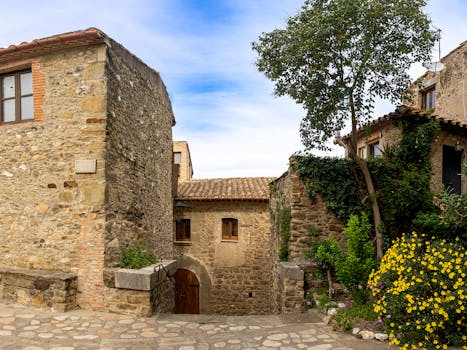
Traveling Through Time: How Europe’s Historical Heritage Shapes Modern Lifestyles in 2025
Traveling Through Time: How Europe’s Historical Heritage Shapes Modern Lifestyles in 2025. Europe, a continent steeped in history and tradition, has a unique ability to blend the old with the new. As we journey through the cities and countryside of Europe, we find that the historical heritage of this fascinating continent continues to shape modern lifestyles in profound ways. In this article, we will delve into the ways in which Europe’s rich cultural landscape influences the daily lives of its inhabitants and visitors alike.
Introduction to Europe’s Historical Heritage
Europe’s historical heritage is a treasure trove of architectural wonders, artistic masterpieces, and cultural traditions. From the ancient ruins of Greece and Rome to the medieval castles of England and the Renaissance cities of Italy, Europe’s past is a rich tapestry of diverse influences and experiences. As we explore the historical heritage of Europe, we begin to appreciate the significant role it plays in shaping modern lifestyles.
The Influence of Historical Heritage on Modern Lifestyles
Europe’s historical heritage has a profound impact on modern lifestyles, from the way people live and work to the food they eat and the festivals they celebrate. In many European cities, ancient buildings and monuments have been adapted for modern use, blendings seamlessly into the contemporary urban landscape. For example, the medieval city of Prague, with its winding streets and historic architecture, is now a thriving hub of modern culture and entertainment.
In addition to its influence on urban planning and architecture, Europe’s historical heritage also shapes the daily lives of its inhabitants in more subtle ways. Traditional crafts and skills, such as woodworking and weaving, continue to thrive in many parts of Europe, while modern artisans and designers draw inspiration from the continent’s rich cultural heritage. The famous fashion houses of Paris and Milan, for instance, owe a debt to the exquisite textiles and haute couture of Europe’s past.
Cultural Festivals and Traditions
Europe’s historical heritage is also celebrated through a wide range of cultural festivals and traditions. From the colorful Carnival of Venice to the somber commemorations of Armistice Day, these events bring people together and provide a glimpse into the continent’s rich cultural landscape. The Tomatina festival in Spain, where participants hurl tomatoes at each other, may seem like a modern invention, but it has its roots in a traditional food fight that dates back to the 19th century.
In conclusion, Europe’s historical heritage continues to shape modern lifestyles in profound ways. As we travel through the continent, we find that the past is always present, influencing the way people live, work, and play. Whether through architecture, art, food, or festivals, Europe’s rich cultural landscape is a timeless charm that continues to inspire and delight visitors from around the world.
Conclusion
As we look to the future, it is clear that Europe’s historical heritage will remain an essential part of modern lifestyles. As we strive to create a more sustainable and equitable world, we can learn valuable lessons from the past, from the importance of preserving traditional skills and crafts to the need to protect and conserve our cultural heritage for future generations. Whether you are a history buff, a foodie, or simply a curious traveler, Europe’s historical heritage has something to offer everyone, and its influence will continue to be felt for generations to come.





